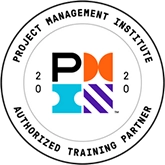Requirements — Planning and Scoping
- Traditional Classroom: ½-day
- Virtual Instructor-led: One 4-hour session; Two 2-hour sessions; One 3-hour session
When starting a new requirements assignment it is critical that you start by understanding exactly what is included within its scope (to avoid scope creep) and plan how you’re going to approach it. Many companies have requirements deliverable templates that need to be completed. Without understanding how you plan to approach it, the plan simply becomes “complete the templates” by filling in the sections. This workshop will cover the first phase of a requirements life cycle process whereby you will determine its scope from different perspectives and develop a requirements project plan to guide your work. While not all projects are the same and the process should be tailored to meet its needs, you will always conduct planning and scoping — the level of effort this takes will vary by project size, type, and nature.
The format of the workshop will be interactive and collaborative. It will serve to provide hands-on workshop discussions/exercises to ensure a sound understanding of how to effectively:
- Understand that there are different types of projects.
- Determine and the scope of the projects by looking at different perspectives: business context, business area/processes, organizational/stakeholder, technology, and information.
- Develop the plan for the requirements project based upon what type of project it is.
- Plan for and conduct a requirements project kickoff meeting.
Target Audience
Individuals who will benefit from this workshop include business analysts and project managers.
Learning Objectives
- Describe the value of a requirements life cycle process that can be used to guide the business analysis/requirements project in a standard and consistent manner.
- Illustrate the different perspectives involved in scoping a project and building artifacts to describe the scope to minimize scope creep.
- Conduct stakeholder analysis to ensure that you include the right people at the right time on the project based upon their domain areas of expertise.
- Determine the nature of the project and understand the differences that will help you determine the approach and plan for tackling the work.
Key Takeaways
- Requirements life cycle process description.
- Different types of projects for which requirements need to be documented.
- Looking at a project from different perspective and illustrating them to describe the scope.
- Conducting stakeholder analysis and documenting results that will be used in determining information gathering and validation sessions.
- Requirements plan and what should be included.
- Orchestrating an effective requirements kickoff meeting.
Course Outline
Module 1: Conduct Initial Information Gathering
- Discussion: Starting a New BA Project
- Who and What
- Business Goals and Requirements
- Conduct Document Analysis
- Create a Project “Working Document”
- Overview of the Case Study — Initial Information Gathering
Module 2: Define the Scope
- Business Context
- Exercise: Build a Business Context Diagram
- Organization
- Exercise: Build an Organization/Role Chart
- Business/Technology
- Exercise: Build a Business/Technology Landscape Diagram
- Business Processes
- Exercise: Build a Process Decomposition Diagram
- Information
- Exercise: Build a Business Information Inventory or Information Model
- Product(s)
- Exercise: Build an Initial Draft of the Product Model
Module 3: Conduct Stakeholder Analysis
- Identify Requirements Project Team/Stakeholders
- Stakeholder Register Template
- Roles and Responsibilities
- Exercise: Build a Stakeholder Register
Module 4: Determine Requirements Project Approach/Deliverables
- Determine Requirements Project Approach
- Exercise: Document Factors about Project and High-Level Approach
Module 5: Create the Requirements Project Plan
- Develop the Requirements Project Plan
- Key Factors for Planning
- Exercise: Build a High-Level Requirements Project Plan
Module 6: Conduct Requirements Project Kickoff
- Exercise: Build a Plan for the Requirements Project Kickoff
BAV304-5a Course Code
For more information on this topic, as well as how Corporate Education Group can help power your organization’s performance, contact us via email or call 1.800.288.7246 (US only) or +1.978.649.8200. You can also use our Information Request Form!





